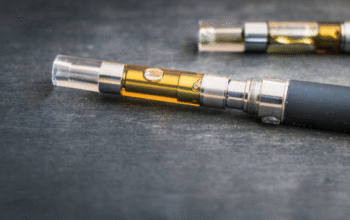
Understanding SRS Recovery
Sex Reassignment Surgery (SRS) is a transformative step for individuals transitioning to their true gender identity. However, proper post-operative care is essential for smooth healing and optimal results. The SRS recovery time varies based on the type of procedure, individual health, and adherence to aftercare guidelines.
In this guide, we’ll discuss essential SRS post-surgery recovery tips, what to expect during healing, and how to ensure the best outcome.
Stages of Healing After Gender Reassignment Surgery
1. Immediate Post-Surgery Phase (First Two Weeks)
- Patients stay in the hospital for 5-7 days for close monitoring.
- Pain, swelling, and bruising are common but manageable with prescribed medications.
- Wound care is crucial to prevent infections.
- Rest and minimal movement are recommended to aid healing.
2. Early Recovery Phase (Weeks 3-6)
- Swelling and discomfort gradually subside.
- Patients can start walking gently to promote blood circulation.
- Regular dilation (for MTF surgery) begins as instructed by the surgeon.
- Following post-op care for SRS strictly ensures smooth progress.
3. Long-Term Recovery Phase (3-12 Months)
- Full recovery may take up to a year, with gradual improvements.
- Sensory changes in the surgical area normalize over time.
- Patients can resume daily activities and non-strenuous exercise after 6-8 weeks.
Essential Tips for Faster Healing After SRS
1. Follow Your Surgeon’s Instructions
Your surgeon will provide detailed guidelines on wound care, pain management, and physical activity restrictions. Adhering to these ensures minimal complications and faster recovery.
2. Maintain Proper Hygiene
- Clean the surgical area with recommended antiseptic solutions.
- Change dressings as directed to prevent infections.
- Avoid soaking in bathtubs or swimming pools until fully healed.
3. Stick to a Healthy Diet
- Eat protein-rich foods to aid tissue repair.
- Stay hydrated to reduce swelling.
- Incorporate vitamins and minerals for enhanced healing.
4. Manage Pain and Swelling
- Use cold compresses to reduce inflammation.
- Take prescribed pain medications as needed.
- Elevate your legs when resting to promote blood circulation.
5. Be Consistent with Dilation (For MTF Patients)
Dilation is crucial in Male to Female surgery (MTF) to maintain vaginal depth and elasticity. Skipping or delaying dilation sessions may lead to complications.
6. Avoid Strenuous Activities
- No heavy lifting or intense workouts for at least 6-8 weeks.
- Gradually increase activity levels under medical supervision.
7. Monitor for Signs of Complications
Contact your surgeon immediately if you experience:
- Excessive bleeding or swelling
- Signs of infection (fever, pus, severe redness)
- Unusual pain that worsens over time
Emotional and Mental Well-being During SRS Recovery
Healing after gender reassignment surgery isn’t just physical—it’s emotional too. Here’s how to take care of your mental health:
- Stay connected with a support group or therapist.
- Practice self-care to boost confidence and patience during recovery.
- Give yourself time—every individual heals at their own pace.
Why Choose Clinic Reborn for SRS?
At Clinic Reborn, we provide expert SRS procedures with a patient-centric approach. Our experienced surgeons and dedicated aftercare team ensure a smooth and comfortable transition.
If you’re considering SRS and need a personalized consultation, book a consultation today to discuss your journey with our specialists.
You can also read customer reviews here and learn why patients trust Clinic Reborn for gender transition procedures.
Final Thoughts
The SRS recovery time requires patience, care, and strict adherence to medical advice. With proper aftercare, a healthy lifestyle, and emotional support, you can ensure a successful transition.
For expert guidance and a safe, comfortable recovery, contact us today. Let Clinic Reborn be your trusted partner in your transition journey.



